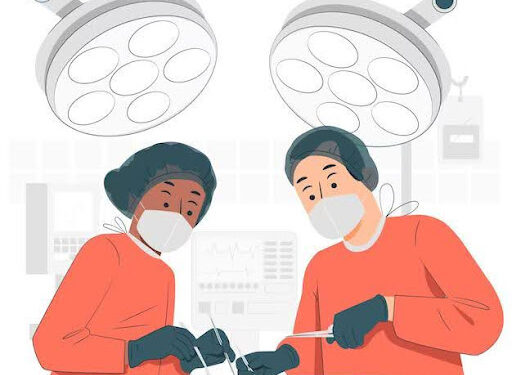Laparoscopy is a minimally invasive surgery. It is vital in diagnosing infertility. It involves a small incision and the use of a laparoscope to inspect reproductive organs. This method offers a direct, detailed view of the uterus, fallopian tubes, and ovaries. Its significance lies in accurately identifying abnormalities that could impact fertility. As we navigate the complexities of assisted reproductive technologies, it becomes evident that the expertise and advanced resources offered by the best IVF specialist in Indore position it as a ray of hope for those on the journey to parenthood. By allowing real-time observation, laparoscopy becomes a crucial tool for doctors to diagnose and formulate effective treatment strategies for infertility-related issues.
In this post, you will get to know about laparoscopy treatment in detail. But before diving into the discussion on laparoscopy and fertility, let’s first have an idea about the common causes of infertility.
Common Causes of Infertility
Infertility often stems from issues like endometriosis, pelvic adhesions, and tubal problems. Endometriosis causes tissue similar to the uterine lining to grow outside the uterus. It leads to pain and fertility issues. Pelvic adhesions, bands of scar tissue, can form after infections or surgeries. This disrupts the normal function of reproductive organs. Tubal issues, including blockages or damage to the fallopian tubes, prevent eggs from traveling to the uterus for fertilization. These conditions significantly contribute to the challenges couples face when trying to conceive.
Let’s have a look at how Laparoscopy can help.
Overview of Laparoscopy
Laparoscopy is a minimally invasive surgical procedure. It enables doctors to view the internal organs without large incisions. It involves making small cuts, usually in the abdomen. Through such a cut, a laparoscope (a thin tube with a camera) is inserted. This technique allows for a detailed examination of organs, particularly in the pelvic and abdominal areas. Laparoscopy is often preferred over traditional open surgery due to its less invasive nature. It results in quicker recovery times, reduced pain, and minimal scarring. It’s widely used in various medical fields, including gynaecology, for diagnostic and therapeutic purposes.
Diagnostic Capabilities of Laparoscopy
Laparoscopy is instrumental in diagnosing infertility causes. It helps identify conditions like endometriosis, where tissue similar to the uterine lining grows elsewhere, and ovarian cysts, which are fluid-filled sacs on the ovaries. It’s effective in detecting fibroids, noncancerous growths in the uterus, and abnormalities in the fallopian tubes, like blockages or scarring, which hinder egg and sperm meeting. This direct examination method provides detailed insights, surpassing the capabilities of standard imaging tests. By accurately identifying these conditions, diagnostic laparoscopy for infertility aids in understanding the underlying causes of infertility, crucial for effective treatment.
Benefits of Laparoscopy
Laparoscopy offers significant benefits over traditional open surgery.
- Its reduced invasiveness leads to shorter recovery times, allowing patients to resume normal activities more quickly.
- Small incisions result in minimal scarring. This is a major advantage for patients concerned about cosmetic outcomes.
- This procedure also lowers the risk of infection, as smaller wounds are easier to manage and heal faster.
- Additionally, laparoscopy provides better internal visibility. It aids surgeons in performing precise and targeted interventions.
- The reduced tissue trauma and less postoperative pain contribute to an overall enhanced patient experience.
These benefits make laparoscopy a preferred choice for many medical procedures, especially in gynaecology.
Improved Accuracy in Diagnosis
Laparoscopy directly visualizes the reproductive organs to significantly enhance diagnostic accuracy. Unlike imaging studies, which provide indirect views, laparoscopy offers a real-time examination of the uterus, fallopian tubes, and ovaries. This method’s precision is crucial in detecting subtle or hidden conditions like mild endometriosis. For example, the hysteron laparoscopy procedure helps in diagnosing small fibroids occur in the womb. The precise nature of laparoscopy facilitates the development of tailored treatment plans. This ensures each patient receives the most appropriate and effective care. Such detailed diagnoses are particularly important in fertility treatments. Understanding the exact cause of infertility is key to successful outcomes.
Role in Treatment Planning
The insights gained from laparoscopy significantly influence fertility treatment planning. It provides a clear picture of the reproductive organs. Laparoscopy for blocked fallopian tubes or identifying the presence of endometriosis gives a detailed understanding. Thus, the healthcare providers devise more targeted treatment strategies. For instance, if laparoscopy reveals tubal blockages, surgical procedures to clear the tubes or in vitro fertilization (IVF) might be recommended. By tailoring treatments to individual conditions identified through laparoscopy, the chances of successful conception and pregnancy are greatly enhanced.
Considerations and Risks
Just like all surgical procedures, laparoscopy carries potential risks and complications. These include reactions to anaesthesia, bleeding, infection, and damage to surrounding organs. However, such complications are rare. The benefits of laparoscopy often outweigh the risks. Patients should discuss these potential risks or side effects related to IVF with their healthcare provider, weighing them against the procedure’s advantages. This discussion should also cover any specific health conditions or concerns that might affect the surgery’s outcome. Informed decision-making is key in ensuring the best possible results from laparoscopy.
Conclusion:
Laparoscopy has revolutionized infertility diagnosis and treatment. This minimally invasive procedure provides unparalleled insights into the reproductive system. It enables accurate diagnoses and effective treatment planning. In short, it’s a significant advancement in reproductive medicine, offering hope to many struggling with infertility.


 Home
Home










